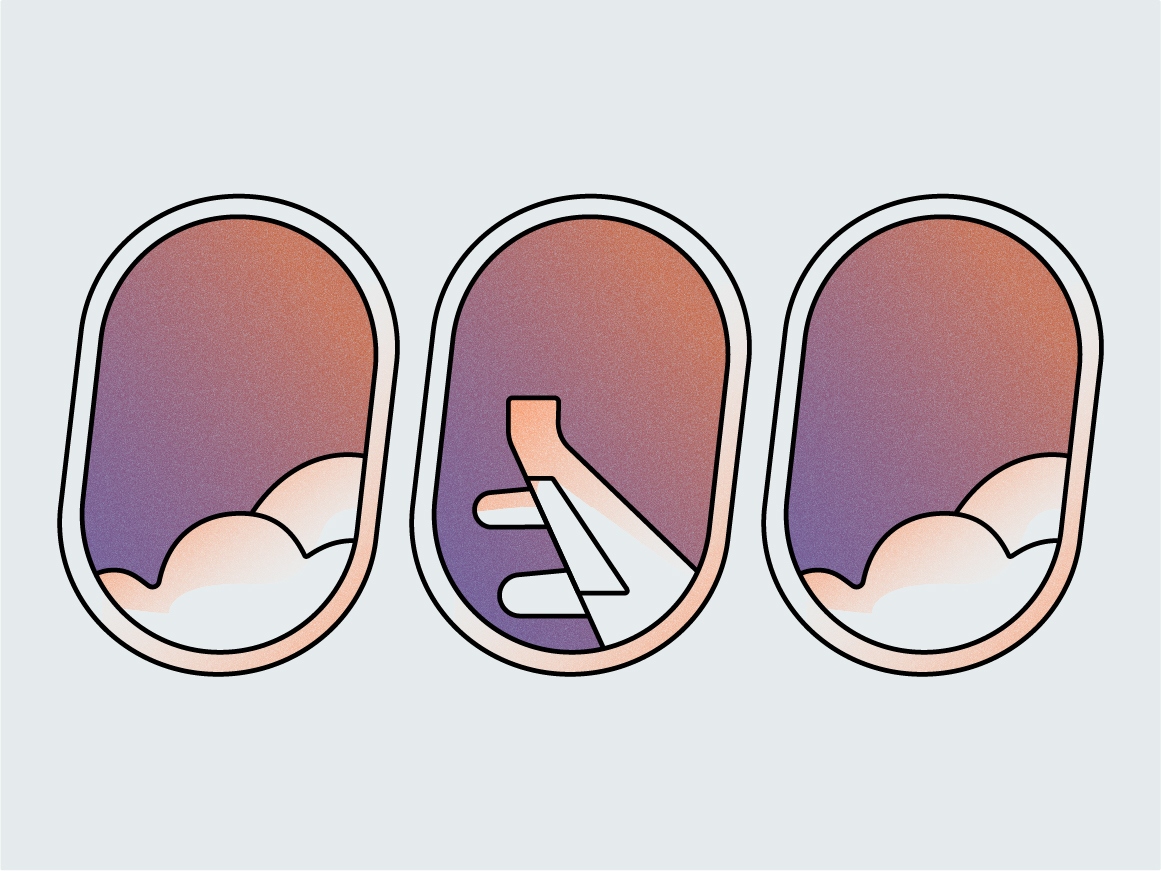Packing, walking through the airport, arduous security lines, finding the right gate, waiting to board, getting to the right seat, and stowing bags quickly to make room for other passengers to get to their seats, too. Then comes the good stuff, like the palpable excitement of getting there, wherever there is. Now, consider this process—and the feelings that come with it— through the lens of technology implementations at a higher ed institution.
This Is Your Captain Speaking: We’ve Got a Definition Problem
As higher ed tech leaders, we have spent years deferring to the standard definition of scalability; the measure of a system’s ability to increase or decrease in performance and cost in response to changes in application and system processing demands.
This definition used to work, but it no longer keeps up with the needs of its users. If it isn’t expanded, it may exacerbate one of higher education’s biggest problems; outdated tech that hinders the student and staff experience.
To help exemplify this point, think about a great experience on a flight. We’re envisioning a top-notch crew with superior customer satisfaction ratings, comfortable seats, drink coupons aplenty, an empty middle seat, ample legroom and an excellent in-flight movie selection. We know that work takes time and costs money. But the investment is made, the changes are time-consuming, and the initial outcome is good. This is the old definition of scalability, thanks to what comes next.
We Don't Work at 50%, Neither Should Our Tech
So, what happens when those hard-fought improvements begin to lose their luster after a few years? The comfortable seats have gotten some wear and tear, all the other carriers have caught up with the legroom and the great customer experience, and we’re just one and the same with our competition. The truth is that the technology we are using today will be outdated tomorrow, and it’s because the tech we’re using was created with an outdated definition of scalability, one that only takes in 50% of the work that needs to be done.
We need to expand how we define the term in a way that emphasizes technology’s agility. And there’s no better way to do that than creating technology rooted in agile scaling capabilities.
The first half of scalability is crucial, but we’re never done creating a better flying experience, even as we grow the fleet. To determine whether your institution’s tech is designed to evolve and scale, ask these three questions:
- Is the integrated data system built on a framework that allows you to adapt as needs change?
- Is the solution nimble enough to upgrade continuously without downtime?
- Is the student and staff experience still personalized, even as the solution or the number of users scales?
The Inefficiency Throughline Isn’t the User, It’s the Tech
Most of us have had at least one poor flying experience. There’s a throughline for most of them—the bad luck begins well before the fasten seatbelt sign comes on. It starts when we get to the airport and see a 300-person security line snaking around the terminal. Inefficient processes, multiple closed security checkpoints, and slow-moving lines frustrate and confuse us. And then come the repercussions. We’re now behind schedule, the plane is boarding, and we’re running to the gate with our shoes in our hands. Sometimes we miss the flight entirely.
What needs to change to turn this experience around? It’s the inefficient processes at the airport. Each has created customizations that work independently of each other and often against the end goal of getting us to our flights. The result is a frustrating experience for passengers and an overly complex day-to-day for staff.
Security lines at airports are to the airline industry what customizations are to institutions when it comes to technology implementation. Customization at the institutional level has created an experience that is cumbersome, frustrating, and makes strategic improvements nearly impossible to pull off. According to Gartner, IT teams spend 66% of their time “running” technology. This leaves little time for innovation and growth. The antidote to this is standardization.
Standardization Now Supports Personalization Later
Whether it be a plane that seats 20 or 200, every carrier has a set of standardized features that boost the in-flight experience. This standardization simplifies scaling for the airline and provides passengers with a streamlined experience. Technology at institutions can follow suit by considering these three questions:
- Is the current technology highly customized, or is it configurable?
- Is the cloud infrastructure embedded with extensive configurability and security features to provide a single solution that can be easily maintained and upgraded?
- Are current technology investments centered around one siloed solution or an integrated, standardized suite of solutions?
It’s time for higher education to leverage an expanded definition of scalability, one that doesn’t stop halfway to true advancement. Doing so may require some discomfort, but that’s OK. Like any seasoned flier will tell you, a little turbulence is part of the journey, and it means that real, long-lasting change is happening, and the destination is approaching.
A Better Definition of Scalability = Long-Term Cost Savings and Improved Student Support
Cloud-based platforms reduce implementation and management costs, thanks to centralized monitoring and reduced IT strain. With less hardware and a more open ecosystem, the power of out-of-the-box functionality is unlocked for students and staff immediately, and long-term savings follow.
To see this in action, look no further than Barstow Community College in Barstow, California. Their IT leadership deployed a unified digital platform that connected its LMS and ERP systems. Their team streamlined its current processes and created a standardized, scalable foundation to ensure speedy initial deployment and a solid foundation for future integration with additional tech solutions. Since completing the integration, Barstow has easily implemented additional solutions, like an analytics tool and a mobile student account management system.
A shift to full SaaS means institutions can more easily reallocate resources, which is vital for staff already working at capacity. By placing the day-to-day maintenance and upgrades with an external team solely focused on higher education, institutions know their students’ data is in the hands of a seasoned flight crew.
SaaS is Foundational
Meeting the complex (and changing) needs of students isn’t going to get easier—the tech will simply have to get better. A high-impact, full SaaS system is an ideal institution-wide foundation to start this work. Here’s why:
- Better analytics and functional dashboards: User-friendly insight displays help administrators better understand enrollment, hiring and financial aid trends, without the stress of figuring out how to pull data. What’s more, insights are coming from across the institution.
- Sustainable tech will be built to support every student on any device: From buying books to checking grades, registering for courses and getting financial aid, SaaS helps you meet students where they are.
- Flexible deployment keeps institutions sharp, not rigid: Consider a solution with flexible deployment models that lets IT teams choose their own pace and benefits from expanded functionality, without having to manage upgrades (or experience downtime as upgrades are deployed).
A Better Student Experience, Rooted in Tech
It’s clear the need for agility isn’t new in higher education, and it’s not going away anytime soon. Institutions have an opportunity to invest in a unified digital experience that empowers staff to work more efficiently and find new ways to support students through automation and personalization. An integration-ready platform allows for the seamless addition of new tools and offerings.
Trevecca Nazarene University in Nashville has taken this opportunity and run with it. When they implemented a student experience-minded platform, their results included a 33% reduction in data center needs and 80% staff shift from maintenance to high-impact projects.
We’ve come to expect a smooth flight when we travel, just like students and staff have come to expect positive experiences with day-to-day technology interaction. It’s time to ask ourselves an important question. Is our tech helping or hurting us? Looking for that answer isn’t hard with the help of some clarifying questions. To recap:
- Is the solution nimble enough to upgrade continuously without downtime?
- Is the student and staff experience still personalized, even as either the solution or the number of back and front-end users scale?
- Is the cloud infrastructure embedded with extensive configurability and security features to provide a single solution that can be easily maintained and upgraded?
- Are current technology investments centered around one siloed solution or an integrated, standardized suite of solutions?
- Is the current technology highly customized, or is it configurable?



